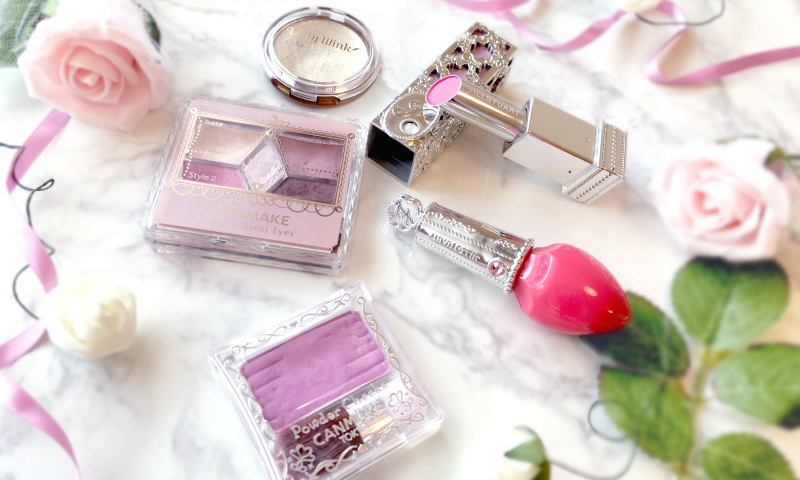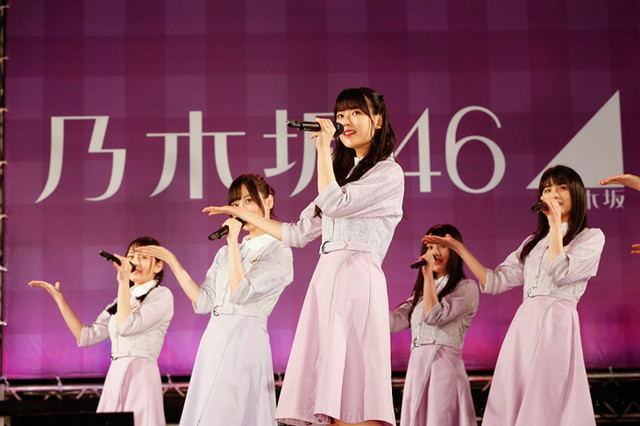
Baring it All: Idols Who Show Their Forehead With Their Hairstyle
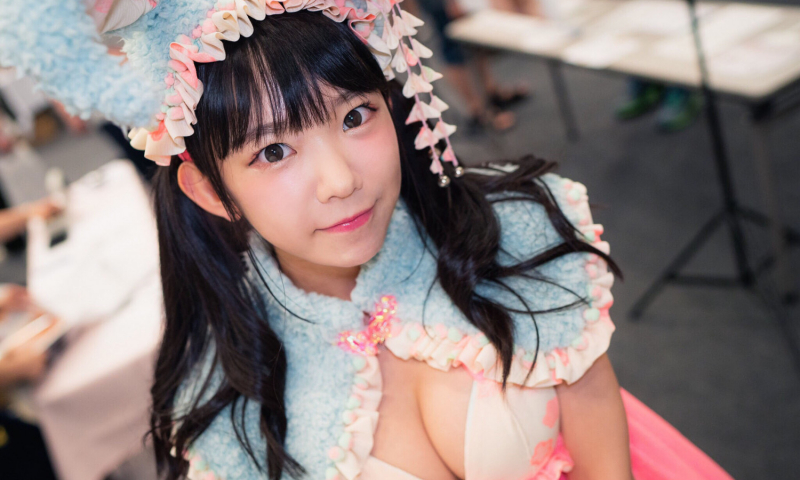
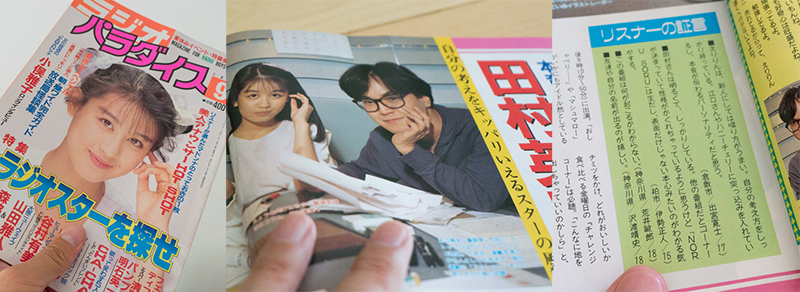
Sponsored Links
I think there are probably many fans who like the radio programs presented by their favorite idols. There’s a very strong personal element to the design, talking content, and so on with radio programs, and it’s because they let you see an idol’s “true self”. Radio is different from television because there’s no video, and you have to read the speaker’s feeling from their voice instead of their expressions. When you listen to a radio program, you can really get a sense of that person’s interests and personality.
「応援しているアイドルのラジオ番組が好きだ」というファンは多いだろう。ラジオ番組というのは、番組の企画や話す内容などを含めてとてもパーソナルな要素が強く、そのアイドルの「素の姿」が見えてくるからだ。ラジオはテレビとは異なり映像がなく、表情などはわからないが、「声」から感情が読み取りやすい。ラジオを聞いていれば、なんとなくその人の好みや性格までいろいろとわかってくるものだ。
Nowadays, when people talk about idol radio programs, they’re generally talking about Radio Nippon. With the inclusion of internet radio, there are many idol programs out there at the moment, and among them are about 20 programs, including Radio Nippon NEXT, who have been employing idols as radio personalities since before the current idol boom.
そして今、アイドルのラジオ番組といえば『ラジオ日本』だと言える。現在、ネットラジオなどを含めると、アイドルの番組はとても多いのだが、その中でも現在のアイドルブーム以前からアイドルがパーソナリティーを務める番組を制作しており、ラジオ日本NEXTを加えると、番組数は今や20本近い。

The radio programs that employ idols as their main personalities started in 2009 Autumn, with “Kikuchi Ami No 1ami9”. Here’s a list of idol programs that are broadcasted in Radio Nippon and Radio Nippon NEXT.
2009年秋に始まった『菊地亜美の1ami9』から、このアイドルパーソナリティー番組枠がスタートしている。ラジオ日本、ラジオ日本NEXTで放送されている番組の一部を以下にリストアップ
・Kikuchi Ami No 1ami9 (Ami Kikuchi’s 1ami9)
・9nine Satake Uki No Uchuuwo Kireini Suru Studio (Uki Satake’s Making the Universe Beautiful Studio)
・BABY RAIDS JAPAN Ooya and Takami’s Shaberista!)
・SUPER☆GiRLS Rina Miyazaki’s Nice Miyari!
・Dream5 Mikoto Hibi and Momona Tamakawa Mikotama Broadcasting Station.
・Mai Watanabe and Mariya Nagao’s Tuesday Night
・Takayanagi Akane No Umarete Konokata (Akane TAkayanagi’s Life Until Now)
・X21 Yoshimoto Miyu Colorful Box~2nd Season~
・Akamaru Dash☆ No Tameshini Ippai Meshiagare!!!! (Akamaru Dash☆’s Have a Taste!!!)
・Nakajima Saki no Cute Na Jikan (Saki Nakajima’s Cute Time)
・Morning Musume’16 No Morning Jogakuin~Houkago Meeting~ (Morning Musume ’16’s Morning Girls School~ Afterschool Meeting~)
・AS1422
・Hello!SATOYAMA&SATOUMI Club
・Country Girls No Tadaima Radio Housouchuu!! (Country Girl’s Radio Broadcasting Now!!)
and so on
・菊地亜美の1ami9
・9nine佐武宇綺の宇宙を綺麗にするラジオ
・ベイビーレイズJAPAN 大矢・高見のしゃべりスタ!
・SUPER☆GiRLS宮崎理奈のナイスみやり!
・Dream5 日比美思 玉川桃奈のみこたま放送局。
・渡辺舞と永尾まりやのTuesday Night
・高柳明音の生まれてこの方
・X21 吉本実憂カラフルボックス~2nd Season~
・赤マルダッシュ☆の試しにいっぱい召し上がれ!!!!
・中島早貴のキュートな時間
・モーニング娘。’16のモーニング女学院~放課後ミーティング~
・AS1422
・Hello!SATOYAMA&SATOUMI Club
・カントリー・ガールズの只今ラジオ放送中!!
など
Besides programs that employ idols as their main personalities, there’s also a program called 60 TRYBu, where idols work as assistants. Because of how proactively concerts where various idols appear are linked to these programs and so on, there are a lot of fans who immediately think of Radio Nippon when it comes to idols.
アイドルがメインパーソナリティーを務める番組のほか、アシスタントを担当する『60TRY部』といった番組もある。こうした番組連動のアイドル対バンライブなども積極的に実施しており、「アイドルならラジオ日本」というイメージを多くのファンが持っている。
I’ve always liked radio myself, and I often tuned into the programs mentioned above. In the past I dabbled as a postcard man, submitting so-called “stories” or “topics”, and on programs like 9nine Uki Satake no Uchuu wo Kirei ni Suru Radio and Nakajima Saki no Cute na Jikan, they often read these submissions.
筆者はもともとラジオが好きで、上記の番組もよく聞いていた。ラジオにいわゆる「ネタ」を投稿するハガキ職人だったこともあり、『9nine佐武宇綺の宇宙を綺麗にするラジオ』や『中島早貴のキュートな時間』では、投稿したネタが読まれることも多かった。
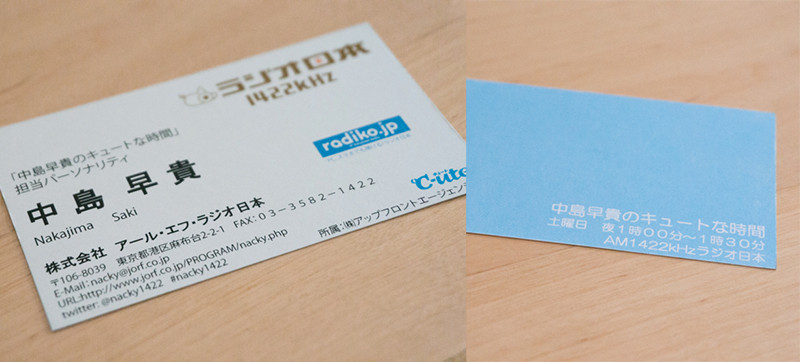
Nakajima Saki no Cute na Jikan, which started on January 1, 2012, is going on its fifth year. This is Saki Nakajima’s business card, which was produced on air. I went to see a public recording of the show at Queens Square Yokohama. 2012年1月1日からスタートし、今年で5年目を迎えている『中島早貴のキュートな時間』。番組内で制作された中島早貴の名刺(表面と裏面)。この番組は、クイーンズスクエア横浜での公開録音も見に行った
The 80s and 90s happened to be the golden age of radio. Much like how people talk about television programs, many people used to discuss radio programs with their friends. Naturally there were more than a few idol radio program broadcasts, and at the time there was one station that people associated with idols, much like Radio Nippon today, which was Nippon Broadcasting System.
80、90年代はといえば、ちょうどラジオ全盛の時代だ。テレビ番組のことを話すように、ラジオ番組について友人と話すことも多かった。もちろん、アイドルのラジオ番組も多数放送されており、中でも今のラジオ日本のように「アイドルなら」と言われていたラジオ局があった。それがニッポン放送だ。
Especially on Sunday night broadcasts, there was a line-up of idols doing radio personality work, and there were many idol fans that spent their weekends listening to these programs until the end, before going to bed.
特に日曜日の夜の放送はアイドルがパーソナリティーを務める番組が並んでおり、すべての番組が終了すると流れる試験放送の音を聞いてから寝る──というのがアイドルファンの週末だった。

Here’s a list of programs I often tuned into between 1986 and 1989. I remember feeling a mixture of happiness and sadness when Noriko Sakai’s first regular program, Tokimeki Pajama MARI・NORI・AKI no Dokkin Time, suddenly changed to Yukiko Okada. 筆者がよく聞いていた1986年度から1989年度までの番組表まとめ。酒井法子の初レギュラー番組『トキメキパジャマ MARI・NORI・AKIのドッキンタイム』は、岡田有希子からの突然のチェンジでうれしいような悲しような複雑な気持ちだったことを思い出しす
This same idol framework remains even today, and from 10:00 p.m. for 30 minutes is always given to idol (talent) personalities. Right now they’re broadcasting Momoiro Clover Z’s MomoClo Club xoxo.
このアイドル枠は今でもその流れが残っており、22時からの30分はずっと女性アイドル(タレント)がパーソナリティーを担当している。現在はももいろクローバーZの『ももクロくらぶxoxo』が放送中だ。
Idol programs I would often listen to at the time on Nippon Broadcasting System were Yoko Minamino Nanno Kore Shikki!, Yui Asaka Sukoshi Otona no Silhouette, and Heart ni “ribbon”. What they all shared in common was that the conversation was always interesting. Each one was fun in a different way, but Nanno’s free conversation approach to answering listeners’ opinions and the like was really amazing. You could really get to know Minamino’s train of thought and her hobbies, and it had a very personal feel to it. Yui Asaka’s had the best reactions to whatever was the plan that day. I really liked her “Itazura Telephone” (“Prank Telephone”) corner. Her Miyazaki accent, which came out from time to time, was adorable and unique, and her humor was by far the most fun. ribbon’s trio had a nice tempo to it, and their characters were very relatable. More than anything, you could see how well they got on together as a group.
当時のニッポン放送のアイドル番組でよく聞いていたのは、『南野陽子 ナンノこれしきっ!』『浅香唯 少し大人のシルエット』『ハートに“ribbon”』だった。共通するのは、しゃべりの面白さ。それぞれ、異なる面白さがあり、ナンノはリスナーの意見などに答えるフリートークが素晴らしかった。趣味や考え方などがわかり、とてもプライベートな感覚があった。浅香唯は企画ものでのリアクションが最高だった。『いたずらテレフォン』のコーナーが好きだったなぁ。時々出てくる宮崎弁も独特で可愛く、「笑える」という面白さではダントツ。ribbonは3人の掛け合いのテンポのよさと、わかりやすいキャラクターがよかった。とにかく、グループとしての仲の良さが出ていた。
Of course there were many idol programs broadcast on stations besides Nippon Broadcasting System, and I would record those on a cassette tape and listen to them on my Walkman. Because I would record over the same tape multiple times, the voices would get distorted when they tape would stretch… Of course I suppose many of you have no idea what I’m talking about.
もちろん、ニッポン放送以外のラジオ局でもアイドル番組が多数放送されており、それらをカセットテープに録音してはウォークマンで聞いたものだ。ノーマルテープに何度も上書きするものだから、テープが伸びてしまって音が歪む……なんてことを言っても、わからない人は多いだろう。
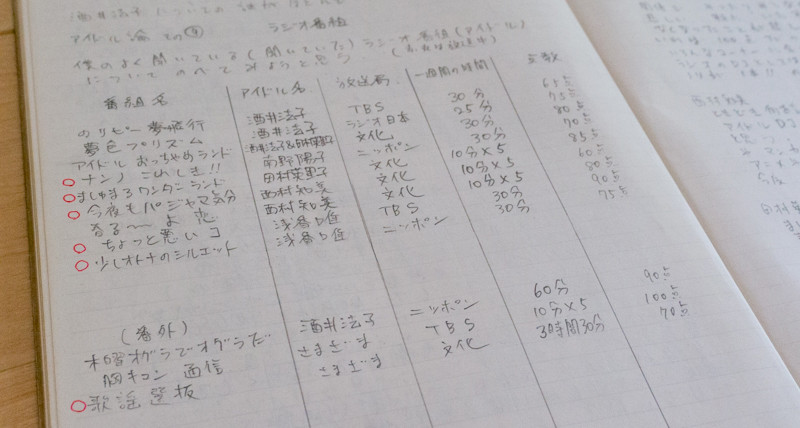
Here’s a notebook I kept in 1989, with a list of talking points from the radio programs I would often listen to. During those days, not very many idol programs were broadcast on Radio Nippon. 1989年当時の、筆者がよく聞いていたラジオ番組について点数をつけているノート。このころは、ラジオ日本でアイドル番組が放送されることはほとんどなかった
How interesting a radio program was, or its “kamikai”, was the so-called fan psychology for how many times you would listen to a program after saving it. In that same vein, I would personally put them together as my own “Radio Masterpiece Collection”. Now you can easily turn voices into digital data, and cut, copy, and paste bytes and edit them, but back then you had to use a double cassette deck, and editing a tape through dubbing was difficult process.
そしてラジオ番組内の面白かった回、いわゆる「神回」は、保存してあとでまた聞きたいというのがファン心理というものだ。筆者はそうした場面をつなげて『ラジオけっさく集』としてまとめていた。いまは音声をデジタルデータにしてしまえば、コピー&ペーストやカットといった簡単な作業で音のつなぎなどの編集ができてしまうが、昔はダブルカセットデッキなどを使い、ダビングしながらテープを編集していたので大変だった。
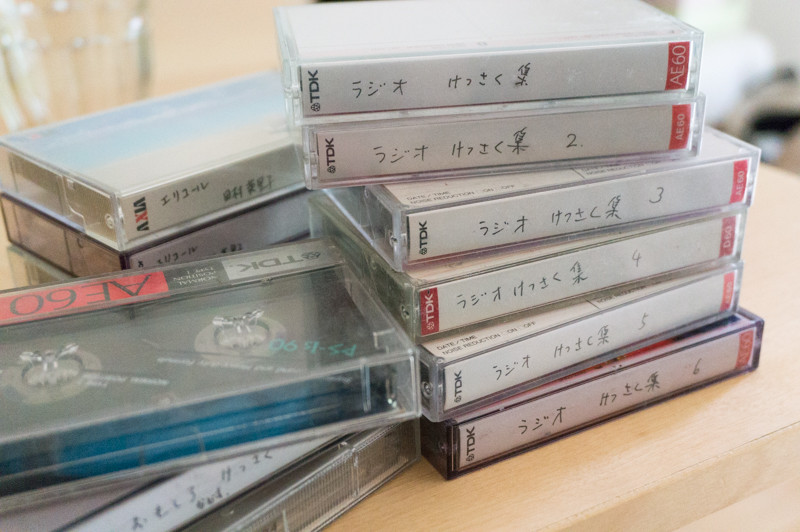
This my “Radio Masterpiece Collection”, a collection of famous scenes from the radio programs I would often tune into. I no longer have any equipment to play the tape, so I can’t listen to it now… Perhaps the majority of the content on it is ribbon or Yui Asaka. よく聞いていたラジオ番組の名場面を集めた『ラジオけっさく集』。今、このカセットテープを再生できる環境がなく、聞くことはできない……。おそらく、ほとんどがribbonか浅香唯
Also, speaking of radio, something I can’t go without mentioning are the “postcard submissions”. Now you can easily submit stories or topics using e-mail or your web browser, which is more convenient.
また、ラジオといえば、先述しているが「ハガキの投稿」という要素も忘れてはいけない。今はメールやウェブフォームから簡単に「ネタ」を送ることができるので便利だなと思う。
In those days you would handwrite your opinion (subject) on a postcard, affix a 40 yen stamp to it (41 yen from 1989), handwrite the addressee’s address on it, and send it by post. Although fax machines were also used during live broadcast programs, it wasn’t really an electronic communication environment, and postcards were most commonly used. As a postcard man, I often sent postcards which were read on idol programs, of course, and others I liked like All Night Nippon, but nevertheless, sending so many of dozens of postcards could really add up. So I was careful to pick what I would write about, and being handwritten, it was important that there weren’t any mistakes, so I would write a draft first. I had to really think about whatever I wanted to write before sending it in.
当時は、ハガキに手書きで意見(ネタ)を書いて、そこに40円(1989年から41円)切手を張って、宛名も手書きで書いてポストに投函していた。生放送の番組宛にはFAXも使っていたが、通信環境で送れないことなどもあり、メインはハガキだった。筆者はハガキ職人で、アイドル番組はもちろん、オールナイトニッポンなども好きでよくハガキを送って読まれていたが、とはいえ、何十枚も送る小遣いもなければ時間もない。だからネタも厳選したし、手書きで間違えるわけにはいかないので下書きもした。ひとつひとつのネタをとても考えて送っていたように思う。
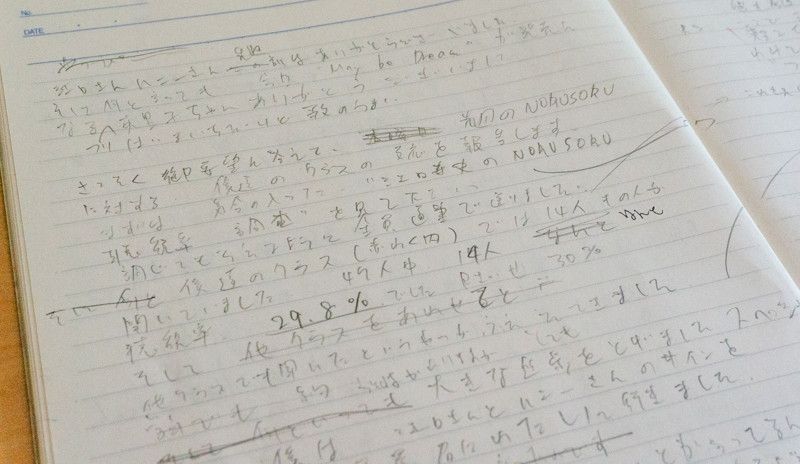
This is my idea memo pad from when I was a postcard man. It’s interesting to see how serious I was about making edits, like where I would change phrases like “before” to “last week”, and try to emphasize a part using “nanto”. ハガキ職人をしていたころのネタ帳。「この前」という表現をわかりやすく「先週」に直したり、「なんと」という部分を強調してみたりと、きちんと編集しているのが面白い(笑)
I’m drifting off topic a bit, but the tricks to getting your postcard read on an idol program were fairly simple ones. It was good to keep in mind that directors (adults) prefer easy topics. More specifically, doing something like any of the following:
・ Write about something listeners would likely react to
・ Come up with an idol comeback
・ Write about something an idol would be able to embellish
・ Keep it brief without adding anything extra
・ Put it together is something that could be passed along as is
話は脱線するが、投稿したハガキがアイドル番組で読まれるコツは結構簡単だ。「ディレクターさん(大人)が楽なネタ」というのを頭に入れておくといい。具体的には以下のようなもの。
・リスナーが反応しそうな時事ネタを入れる
・アイドルの受け答えも想像して書く
・アイドルが話を膨らますことができそうなネタにする
・簡潔にまとめて余計な話は入れない
・そのまま渡して大丈夫な完パケにする
When it came to picking out a postcard, they would pick ones where you could easily read the comment at a glance, or ones that were easiest to handle. It would be necessary to change the topic or writing style depending on the idol, but even now it seems like this method is the same. Like with 9nine Uki Satake no Uchuu wo Kirei ni Suru Radio, Saki Nakajima no Cute na Jikan, or 60TRYBu when Kanon Fukuda was an assistant, all of the submissions are read at the beginning of the program.
ハガキを選ぶときに、パッと見てわかりやすくてコメントもしやすかったら、それだけで扱いやすいのだ。とはいえ、ネタやアイドルによって書き方をちょっと変えたりなども必要なのだけれど、このやり方は今でも通用するようだ。『9nine佐武宇綺の宇宙を綺麗にするラジオ』も『中島早貴のキュートな時間』も福田花音がアシスタントの時の『60TRY部』も、最初に投稿したネタが番組で読まれている。
The postcard I poured the most effort into as a postcard man was for the program Hisashi Eguchi no NORU SORU, which aired on Tokyo-based FM from April to September in 1989. NORU SORU was a late-night live broadcast that began on FM when All Night Nippon was at the height of its popularity. Its flow was quite different from other programs FM had done up until that time, and on Tuesdays Hisashi Eguchi was in charge, and his assistant was Eriko Tamura.
そんな筆者がハガキ職人としてもっとも力を注いだ(?)番組が、1989年4月~9月にFM東京系で放送されていた『江口寿史のNORU SORU』だ。『NORU SOR』は、オールナイトニッポンが全盛のときにFMでスタートした深夜の生放送番組。ノリがそれまでのFM番組とはまったく異なっており、火曜日が江口寿史担当で、そのアシスタントが田村英里子だった。
I made an appearance on a live broadcast of the program as a listener representative. Though I was just a high school student at the time, seeing Eriko Tamura right in front of my eyes like that was the first time I’d ever seen the real side of an idol. It practically impossible to see an idol talking like that, wearing almost no make-up and regular clothing. On top of that I could hardly believe when, during the program, she poured some juice for me into a paper cup, and it made me feel like I could fly.
筆者はこの番組にリスナー代表として生出演したことがある。高校生だったのだが、その時に目の前にした田村英里子が、人生で初めて見たアイドルの素の姿だった。ほぼスッピンで私服という状態で話すなんてことは、当時はなかなかできることじゃない。しかも、番組中で田村英里子本人に紙コップにジュースを注いでもらったのだが、ありえない状況に天にも昇る気持ちだった。
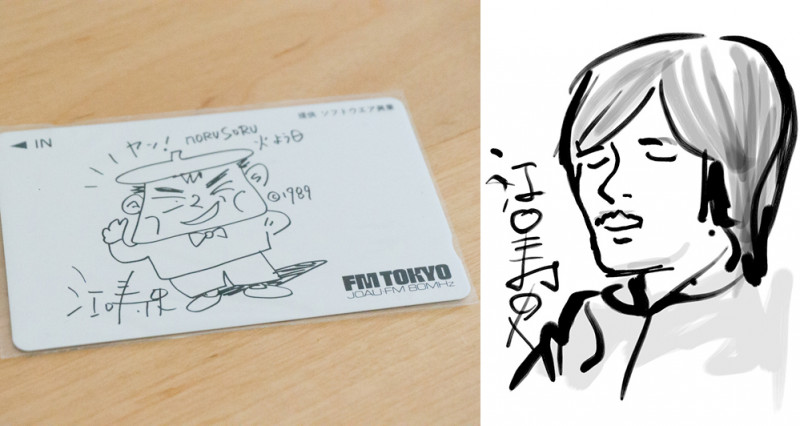
If your postcard was read on Hisashi Eguchi no NORU SORU, you would receive an original telephone card. (Left) By the way, even in exchanges with Eguchi today, sometimes he talks about stuff from back then. This portrait that he drew for me on his iPad is what I used for my LINE icon. (Right) 『江口寿史のNORU SORU』では、ハガキが読まれるとオリジナルテレフォンカードがもらえた(左)。ちなみに江口さんとは現在でも交流があり、時々当時の話もしたりする。iPadで描いてもらった似顔絵は今のLINEのアイコンだ(右)
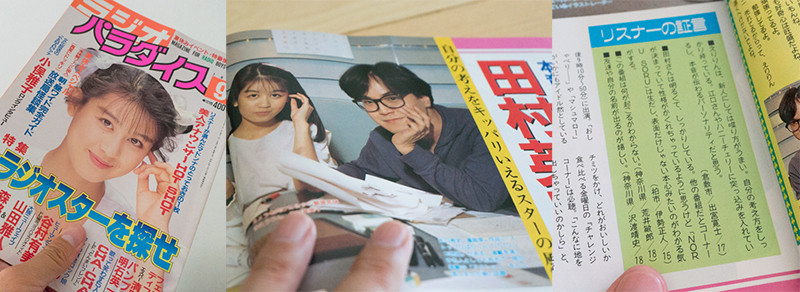
The same day I appeared on Hisashi Eguchi no NORU SORU (July 11, 1987 broadcast from 1:00 a.m.), I was interviewed by someone with the radio information magazine Radio Paradise. Eriko Tamura appears on the cover of the September 1989 edition. 『江口寿史のNORU SORU』に出演した当日(1987年7月11日25時~の放送回)、ラジオ情報誌の『ラジオパラダイス』の取材が入っており、インタビューを受けた。田村英里子が表紙の1989年9月号だ
Then, during the middle of a program, I remember calling for a “meet-up at the Shakey’s in Kichojoji!” and for a “Iisteners’ meet-up”, and talking about the program and so on with people that had gathered there. Live broadcasts of radio programs shared some things in common with internet communities today. We could get our hands on the latest information regarding a program personality and through different personalities, and listeners could exchange their thoughts with one another. That you could exchange opinions in real time via fax was something unique to radio.
そして番組内にて、「吉祥寺のシェーキーズに集合!」と「リスナーの集い」を呼びかけて、みなで集まり番組のことなどを話したのを覚えている。特に生放送のラジオ番組は、今でいう「ネットコミュニティー」の要素を含んでいたように感じる。番組パーソナリティーのもっとも旬な最新情報が手に入るし、パーソナリティーを介してとはなるが、リスナー同士で意見を交換することなどもできた。FAXで意見ができるというリアルタイム性もラジオならではだったように思う。
There was even a fictional idol created from a radio program, called Yui Haga. Created from the program Hikaru Ijuin no All Night Nippon, her hair was styled in a ponytail and her face was never made public. Her complete image was made from suggestions from listeners of the program. The “Yui Haga Project” ended after about a year, but the intense excitement felt from her image being created by listeners felt close to that of internet communities now.
ラジオ番組から生まれた『芳賀ゆい』という架空のアイドルもあった。『伊集院光のオールナイトニッポン』で生まれたアイドルで、ポニーテールの髪型だが、素顔が公表されることはなかった。徹底した偶像としてのアイドル像が作られ、それらはラジオ番組のリスナーから集められた。この『芳賀ゆいプロジェクト』は約1年で終わってしまうのだが、リスナーが一緒になって作り上げる点や盛り上がりの加速の仕方などは、「ネットコミュニティー」に近いものだったかなと感じる。
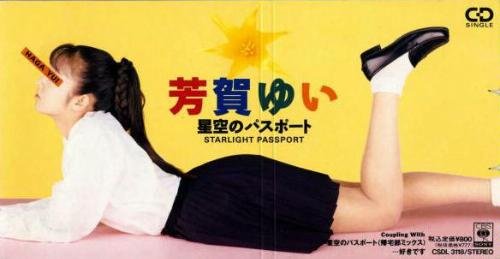
Yui Haga was a fictional idol that created by the radio program Hikaru Ijuin no All Night Nippon. As part of her profile, she was born on April 15, 1974, in Hyogo Prefecture. She made her debut on March 21, 1990, on the “Hoshizora Passport”. 芳賀ゆいはラジオ番組『伊集院光のオールナイトニッポン』から生まれた架空のアイドル。1974年4月15日兵庫県生まれといったプロフィールが作られている。1990年3月21日に『星空のパスポート』でデビューした
Back on the topic of today’s radio, there are many programs who make great use of the internet. The radio and the internet go hand in hand. That’s because since before the era of the internet, you could say that radio was the closest thing to serving its purpose. As services like radiko began to appear, where you could hear live streams of radio broadcasts, it became easier to enjoy listening to the radio. For this reason, it seems like a growing number of younger people are beginning to tune into the radio.
今のラジオに話を戻すと、ネットをうまく活用した番組が多い。ラジオとネットの相性は抜群だと言える。それはネットがなかった時代から、ラジオはそれに近い役割を持った存在であったのだから当然なのかもしれない。『radiko』のようにライブストリーミングでラジオ放送が聞けるサービスなども登場しており、より手軽にラジオを楽しめるようになった。そのため、ラジオを聞き始めたという若い世代も増えているようだ。
I really hope that more people will discover the splendor of hearing people’s real voices. You can hear people’s real voices through radio or internet radio, of course, but also on TwitCasting. I think it would be even better if idols carved out more personal spaces like these. In addition, I’d like them be to appear on many more radio programs and show everyone their real sides. Then perhaps more users would fall in love with the radio, like I did so long ago.
「音声を聞く」ということの素晴らしさに、もっといろんな人が気づいてほしいなと思う。ラジオやネットラジオはもちろん、ツイキャスなどでも音声は届けられる。アイドルはそうしたパーソナルな場を、もっと作ってもいいのになと思う。また、そうした素顔を届ける場の代表として、もっと多くのラジオ番組が登場してほしいなとも思う。そして、当時の筆者のように、ラジオにときめくユーザーが増えていけばなと願うのだ。
※ Feature Song: “Honki”
Eriko Tamura
今回の1曲:『真剣(ほんき)』
田村英里子
Read the author’s serialization about “idols’ past and present” more
著者の連載『アイドル温故知新』をさらに読む
http://tokyogirlsupdate.com/author/toshiro-arai
Translated by Jamie Koide
Sponsored Links
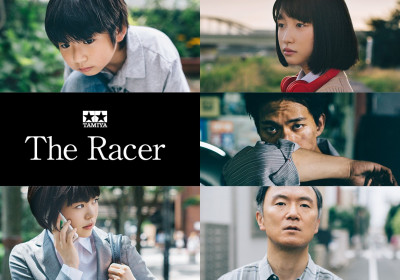
Dramatic Short Film”The Racer” Shows Life Stories of Mini 4WD Racers Casting Rinne Yoshida and Megu from Negicco

Risa Satosaki Reveals Everything in the MV for “S!NG”!


